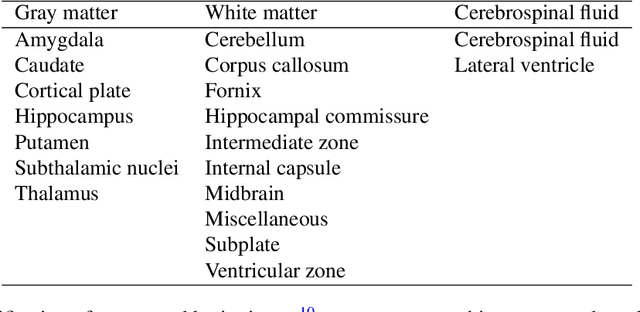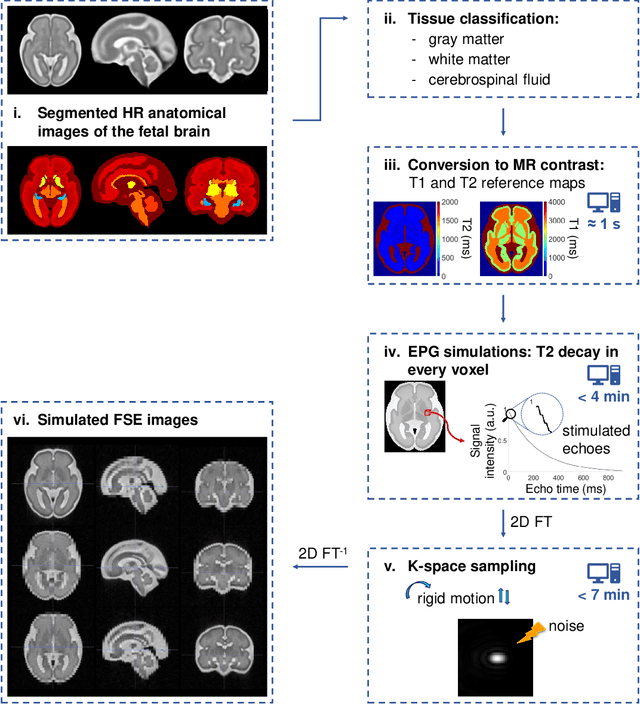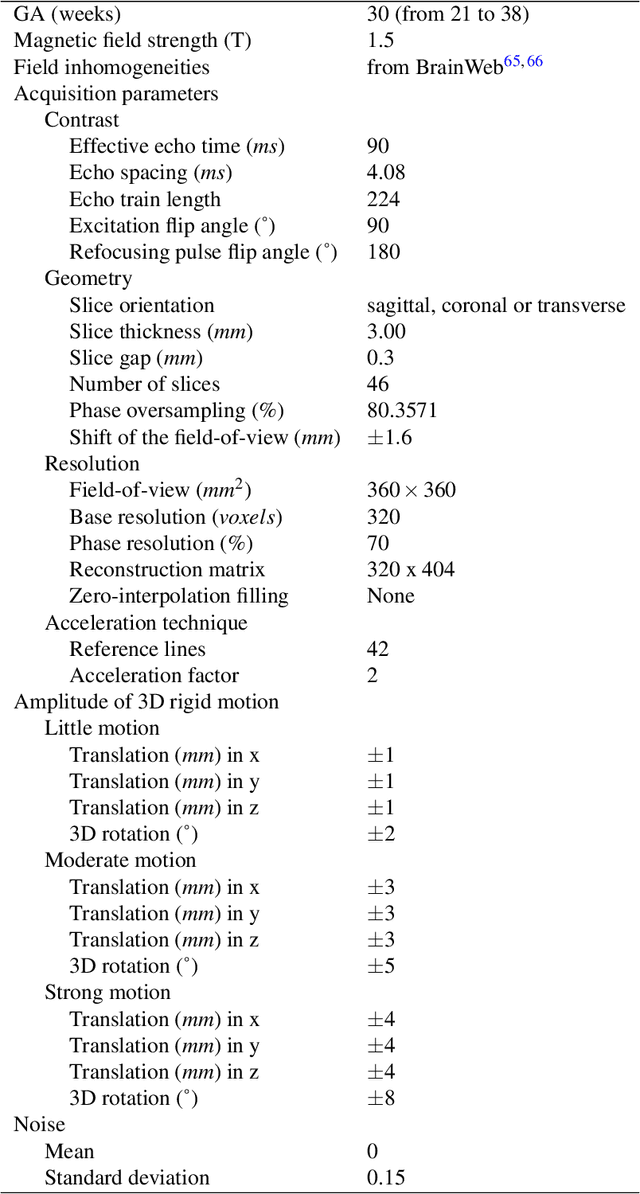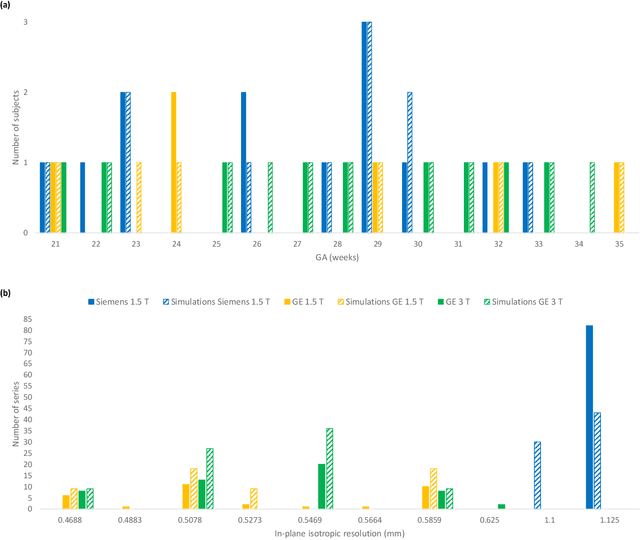Jérôme Yerly
Department of Radiology, Lausanne University Hospital, CIBM Center for Biomedical Imaging, Switzerland
FaBiAN: A Fetal Brain magnetic resonance Acquisition Numerical phantom
Sep 06, 2021



Abstract:Accurate characterization of in utero human brain maturation is critical as it involves complex and interconnected structural and functional processes that may influence health later in life. Magnetic resonance imaging is a powerful tool to investigate equivocal neurological patterns during fetal development. However, the number of acquisitions of satisfactory quality available in this cohort of sensitive subjects remains scarce, thus hindering the validation of advanced image processing techniques. Numerical phantoms can mitigate these limitations by providing a controlled environment with a known ground truth. In this work, we present FaBiAN, an open-source Fetal Brain magnetic resonance Acquisition Numerical phantom that simulates clinical T2-weighted fast spin echo sequences of the fetal brain. This unique tool is based on a general, flexible and realistic setup that includes stochastic fetal movements, thus providing images of the fetal brain throughout maturation comparable to clinical acquisitions. We demonstrate its value to evaluate the robustness and optimize the accuracy of an algorithm for super-resolution fetal brain magnetic resonance imaging from simulated motion-corrupted 2D low-resolution series as compared to a synthetic high-resolution reference volume. We also show that the images generated can complement clinical datasets to support data-intensive deep learning methods for fetal brain tissue segmentation.
Free-running SIMilarity-Based Angiography (SIMBA) for simplified anatomical MR imaging of the heart
Jul 13, 2020



Abstract:Purpose: Whole-heart MRA techniques typically target pre-determined motion states and address cardiac and respiratory dynamics independently. We propose a novel fast reconstruction algorithm, applicable to ungated free-running sequences, that leverages inherent similarities in the acquired data to avoid such physiological constraints. Theory and Methods: The proposed SIMilarity-Based Angiography (SIMBA) method clusters the continuously acquired k-space data in order to find a motion-consistent subset that can be reconstructed into a motion-suppressed whole-heart MRA. Free-running 3D radial datasets from six ferumoxytol-enhanced scans of pediatric cardiac patients and twelve non-contrast scans of healthy volunteers were reconstructed with a non-motion-suppressed regridding of all the acquired data (All Data), our proposed SIMBA method, and a previously published free-running framework (FRF) that uses cardiac and respiratory self-gating and compressed sensing. Images were compared for blood-myocardium interface sharpness, contrast ratio, and visibility of coronary artery ostia. Results: Both the fast SIMBA reconstruction (~20s) and the FRF provided significantly higher blood-myocardium sharpness than All Data (P<0.001). No significant difference was observed among the former two. Significantly higher blood-myocardium contrast ratio was obtained with SIMBA compared to All Data and FRF (P<0.01). More coronary ostia could be visualized with both SIMBA and FRF than with All Data (All Data: 4/36, SIMBA: 30/36, FRF: 33/36, both P<0.001) but no significant difference was found between the first two. Conclusion: The combination of free-running sequences and the fast SIMBA reconstruction, which operates without a priori assumptions related to physiological motion, forms a simple workflow for obtaining whole-heart MRA with sharp anatomical structures.
 Add to Chrome
Add to Chrome Add to Firefox
Add to Firefox Add to Edge
Add to Edge